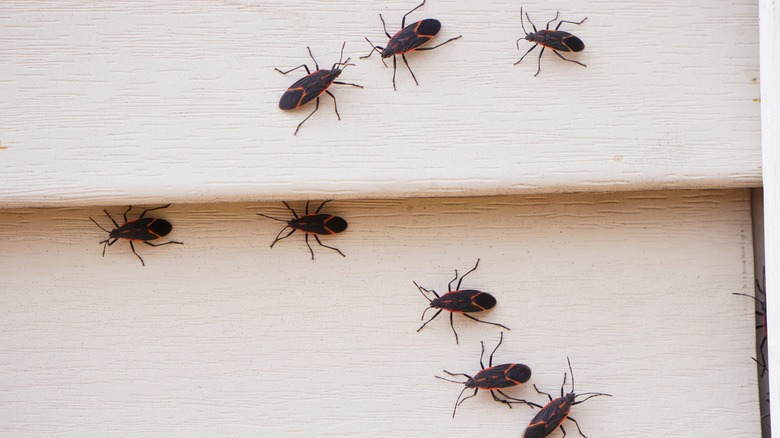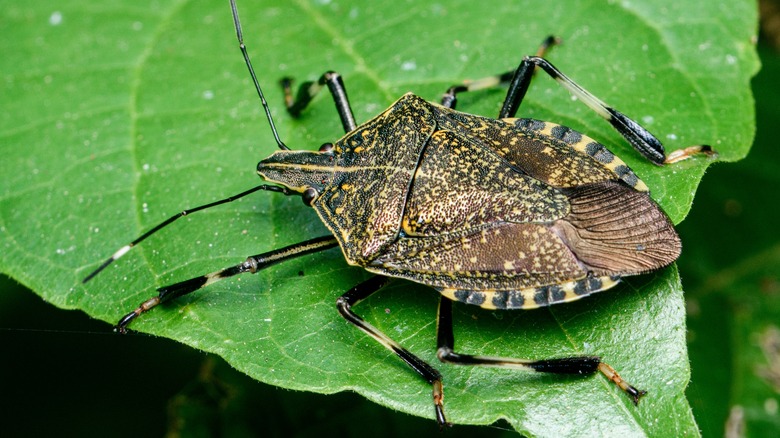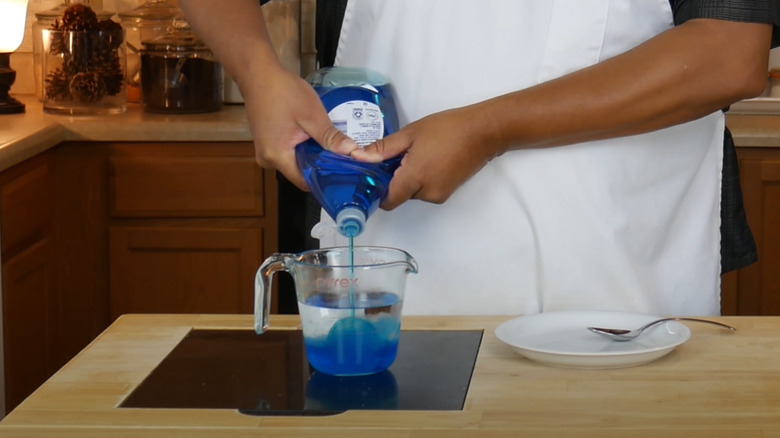How To Spot The Difference Between Stink Bugs And Boxelder Bugs
So, you think you've got a keen eye for entomology. Well, in the bustling biosphere teeming with various creatures, both tiny and titanic, two notorious, uncanny doppelgangers spark equal parts fascination and exasperation: stink bugs and boxelder bugs (maple bugs). These unwitting house intruders hold their own in the natural world, terrorizing our serene gardens and causing homeowner frustration with their strikingly similar appearances. They reign supreme in their knack for deception, each releasing an undeniably harsh odor as their defense against threats. But despite their shared affinity for aromatic escapes, look closely, and you'll find variations in the shape, size, and color patterns.
But what fuels boxelder and stink bugs? Both, harmless to humans aside from the inherent annoyance, feed voraciously on plants. The larva launches its gastronomic journey feeding on weeds and grasses, then matures to gain a taste for agricultural and cherished garden finds — beans, cotton, corn, apples, berries, you name it. As fall descends, these bugs trade the harsh outdoor chill for the warm nooks and crannies of your home — cracks in your walls, window sills, and gaps in your foundations. Yet, with the arrival of spring, they bid our homes farewell, scurrying to the familiar embrace of the outdoors. Armed with this knowledge, the pressing query remains: what sets the boxelder bug apart from the stink bug, and how do you keep them out of your house?
Boxelder bug vs. stink bug differences
The boxelder bug, named after its favorite habitat — the female boxelder tree, also finds solace in ash and maple trees. Bearing an elongated body stretching up to ½-inch, its outer facade is primarily dark brownish, flanked by vivid red-orange markings. The spectacle doesn't end there: the bug's wings fold and recline onto its body, fashioning an "X"-pattern that's hard to ignore — think of an aerial view of treasure locales on pirate maps. The touch of extravagant fashion extends to their eyes and the tips of their legs, both a piercing red.
Then, there are maple bug's distant Asian cousins: stink bugs. Introduced to U.S. soils in the 1990s and extending their reign over 38 states (per EPA), these bugs are the unassailable yet slightly larger rulers. Stretching between ½-inch to ¾-inches, they are protected by glossy, brownish-gray or green fortified shells bearing a distinctive shield shape.
Odor production sets these bugs apart, too. Like an undercover operative, the boxelder bug doesn't emit odors as part of its routine. However, it unleashes a pungent deterrent when provoked or crushed. On the other hand, stink bugs opt for an "aromatic" approach. During their routine or when hibernation beckons, they can discharge a fragrant signature that draws others to their snug winter recess. And if their tranquillity is disrupted, prepare your senses for a smell much unholier than that of boxelder bugs. For that reason, exercise caution when getting rid of stink bugs and boxelder bugs.
How do you eliminate boxelder bugs and stink bugs?
Boxelder and stink bugs are not the kind of guests who understand their welcome has been overstayed. When it comes to removing stink bugs and boxelder bugs from your home, squishing them is rarely an option unless you have a penchant for the lingering stink and stains they leave behind. And while the surrender to chemical pesticides seems imminent, you can't overlook the harm they could inflict on your little ones, furry friends, or pollinators. To add insult to injury, these bugs have developed quite a resistance to conventional pesticides.
Your household vacuum presents an excellent battlefield strategy against boxelder and stink bugs; suck up the enemy lines and promptly discard the bag. Alternatively, unleash the sticky traps. For a more traditional crusade, whip up a lethal bug cocktail of 1 tablespoon of dish detergent and 4 cups of water. Either capture and drown those bugs in a container with this soapy broth or play sniper with a 32-ounce spray bottle for more precise targeting.
However, should these nuisances continue to defy your ingenious DIY efforts, there's no shame in calling in professional extermination. But again, several preventative steps will keep those unwelcome guests out. From sealing potential entry points (cracks, gaps, holes) to repairing broken window or door screens, leave no stone unturned.


